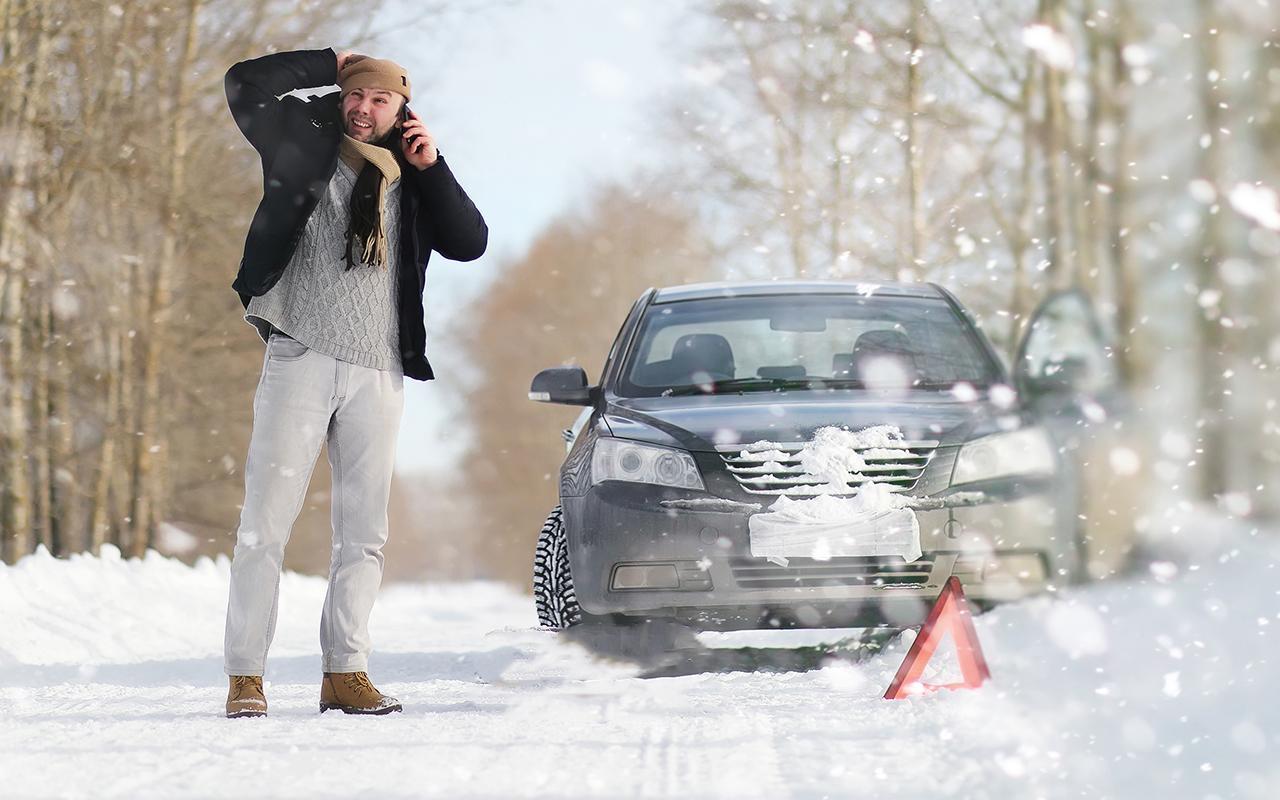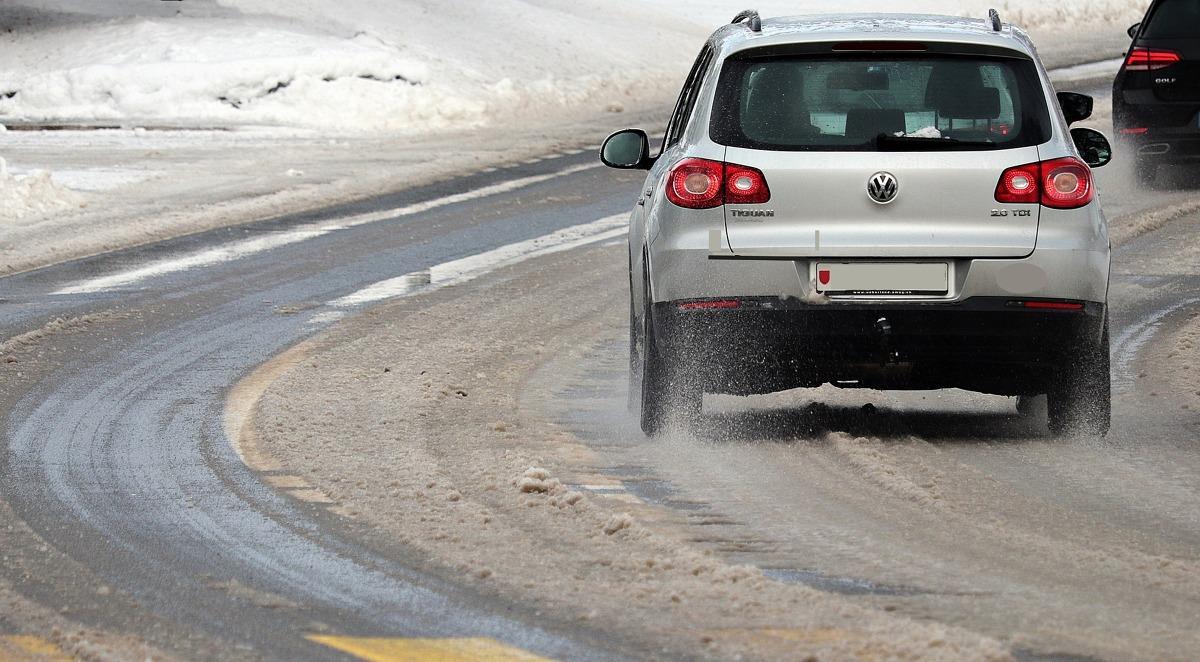
Winter car. TOP 5 most common malfunctions
Content
 Negative temperatures, snow, dampness and salt on the roads. Winter is a particularly difficult time for drivers and their vehicles. Despite the gently sloping start of the season, conditions will appear in the near future, for example, the state of the suspension or bodywork. Experts have prepared a list of the 5 most common winter malfunctions with which cars get to the mechanics.
Negative temperatures, snow, dampness and salt on the roads. Winter is a particularly difficult time for drivers and their vehicles. Despite the gently sloping start of the season, conditions will appear in the near future, for example, the state of the suspension or bodywork. Experts have prepared a list of the 5 most common winter malfunctions with which cars get to the mechanics.
Slippery pothole roads and reckless driving - watch your suspension
Negative temperatures and snowfalls greatly affect the condition of the roads. This, in turn, can directly affect the condition of the car's suspension. Experts note that after winter there are more problems with the suspension and steering, damaged when entering a pit or on an invisible, snow-covered curb.
“Weather conditions have been exceptionally favorable so far. However, it should be remembered that winter can still surprise us. Steering or suspension problems may go unnoticed by drivers for some time, especially in challenging road conditions. However, driving with a faulty suspension element most often negatively affects other parts of the system and leads to more serious malfunctions, says ProfiAuto expert Adam Lenort.
In winter, not only the suspension can suffer - wheels and discs are at risk.
Driving through snow-covered pits or hitting a buried curb can be dangerous not only for shock absorbers and rocker arms. A common problem that drivers turn to ProfiAuto Serwis in winter is bent rims, damaged tires or geometry misalignment. The first symptom of a problem is usually vibrations felt on the steering wheel. It is worth contacting a specialist who will check the condition of the wheels and re-balance them. You may need to reset the geometry. The cost of any repair will depend on the type of fault. When we destroy a rim, sometimes it is enough to straighten it, and sometimes a deeper restoration is required. As a last resort, drivers should also consider replacing the rim with a new one.
– It is also easy to damage the tire itself on pits or curbs. Under the influence of a strong impact, the cord structure can break, which usually leads to inflation of the tire. Then the only salvation is to replace the tires with new ones. Let's not underestimate the damage. The tire is the only part of the car that is in direct contact with the road. In winter, you should also check your tire pressure more frequently. Lower temperatures reduce it. Therefore, with their arrival, we must increase the pressure by 0,2 bar. In turn, when it warms up, we must return to the desired value. Pressure affects traction, braking distances and tire life, explains Adam Lenorth.
Salt and stones on the road are dangerous for the body and exterior of the car
When the road workers begin to clear the snow, salt comes into play, and when clearing and removing snow, small stones and gravel appear on the road. Then it is easy to damage the car body. Paint chips are especially common on the hood, lower doors and wheel arches. Small cracks may not be noticeable, but they lead to more damage because in winter they are filled with moisture and ubiquitous salt, which leads to corrosion. In the event of severe bodywork, bodywork or corrosion, consult a qualified mechanic for advice on how to protect or repair the damage. Sometimes it is enough to dry, clean and apply a layer of a special preparation that will help you survive the winter and wait for a deeper spring repair. In extreme cases, immediate action is needed.
See also: driver's license. Can I watch the exam recording?
– In winter conditions, it is worth protecting the car body from damage. The cheapest, but also the least effective measure is the application of hard wax. More durable, but also much more expensive, is fixing the paint with a ceramic coating. It is also becoming fashionable to wrap the car with a colorless protective film. The investment is not cheap, but you don't have to wind the whole machine. We can limit ourselves to only protecting sensitive areas (front belt, hood or bottom of the door). Then it will not be such a big expense, - says the ProfiAuto expert.
Winter lack of energy - problems with the battery
Low temperatures or moisture should not harm a healthy and charged battery. Problems arise as the battery begins to wear out. The average battery life is 4-5 years, but sometimes after two years. A battery that is already heavily depleted will start to become problematic at low temperatures and when trying to start the car. Most often, it is enough to connect the device to the charger and charge it to make it work again. However, if your battery dies frequently, it's time to consider a new one. Batteries that we can buy in automotive stores are maintenance-free and have the so-called "Magic Eye" located in the case. It allows you to check the state of charge of the battery. Green means everything is fine, black needs to be charged, and yellow or white suggests replacing it with a new one. Even a new battery can fail due to the inattention of drivers if the battery is discharged at extremely low temperatures, for example, by leaving the car with the headlights on. The electrolyte in such a battery will freeze very quickly and the device should only be replaced.
Both battery and starter
Among the elements that are very sensitive to low temperatures and humidity is the engine starter. This is a device connected directly to the battery. The starter consumes the most current when starting the engine, and therefore it is important that the battery is in good condition. If noises or noises appear when starting the engine, this should be a signal to the driver that it is worth contacting a mechanic for a check.
– Starters that are not sufficiently protected from external factors have a high failure rate. They corrode the contacts that create resistance, which makes it difficult to supply current to the starter. There are also cases of freezing of the device. Turning the power on and off several times can help here. However, be aware that the startup time should not exceed a dozen or so seconds, because we can drain the battery. Oil that is too viscous can also be difficult to start as it causes more resistance in the engine. Unfortunately, older car owners are saving money by switching to semi-synthetic or even mineral oil, which can prevent morning starts as a result, adds Adam Lenort.
Skoda. Presentation of the line of SUVs: Kodiaq, Kamiq and Karoq
